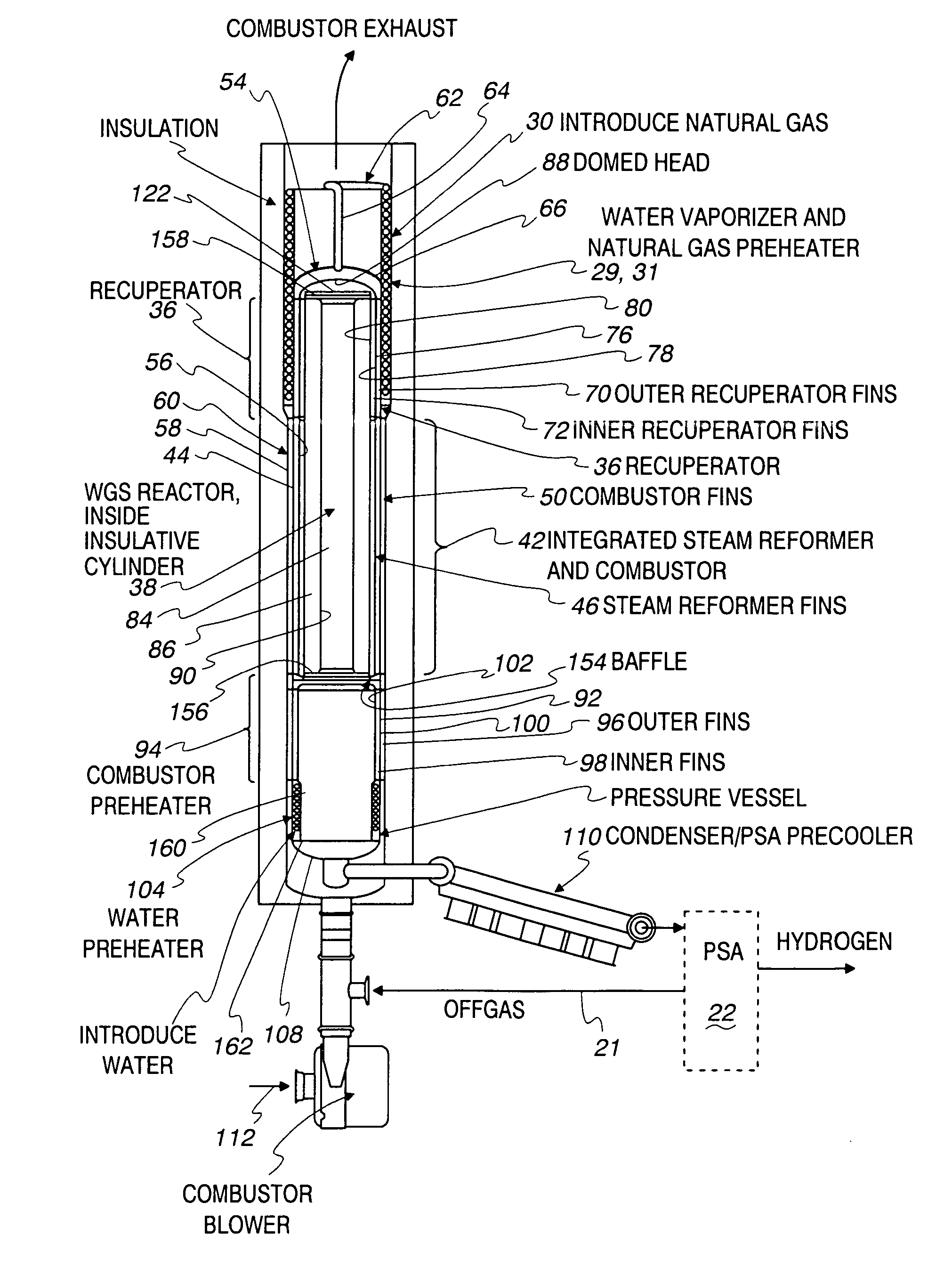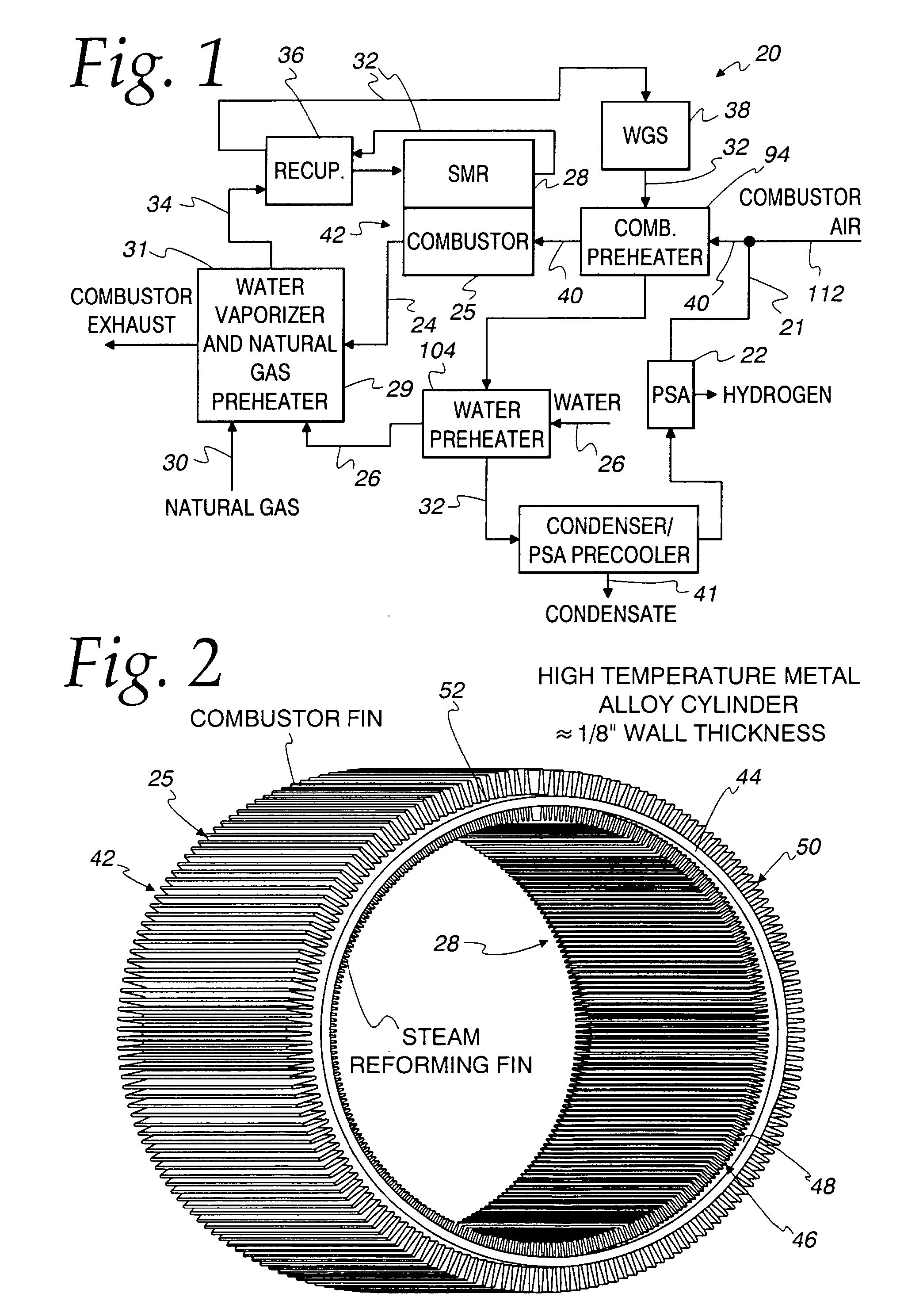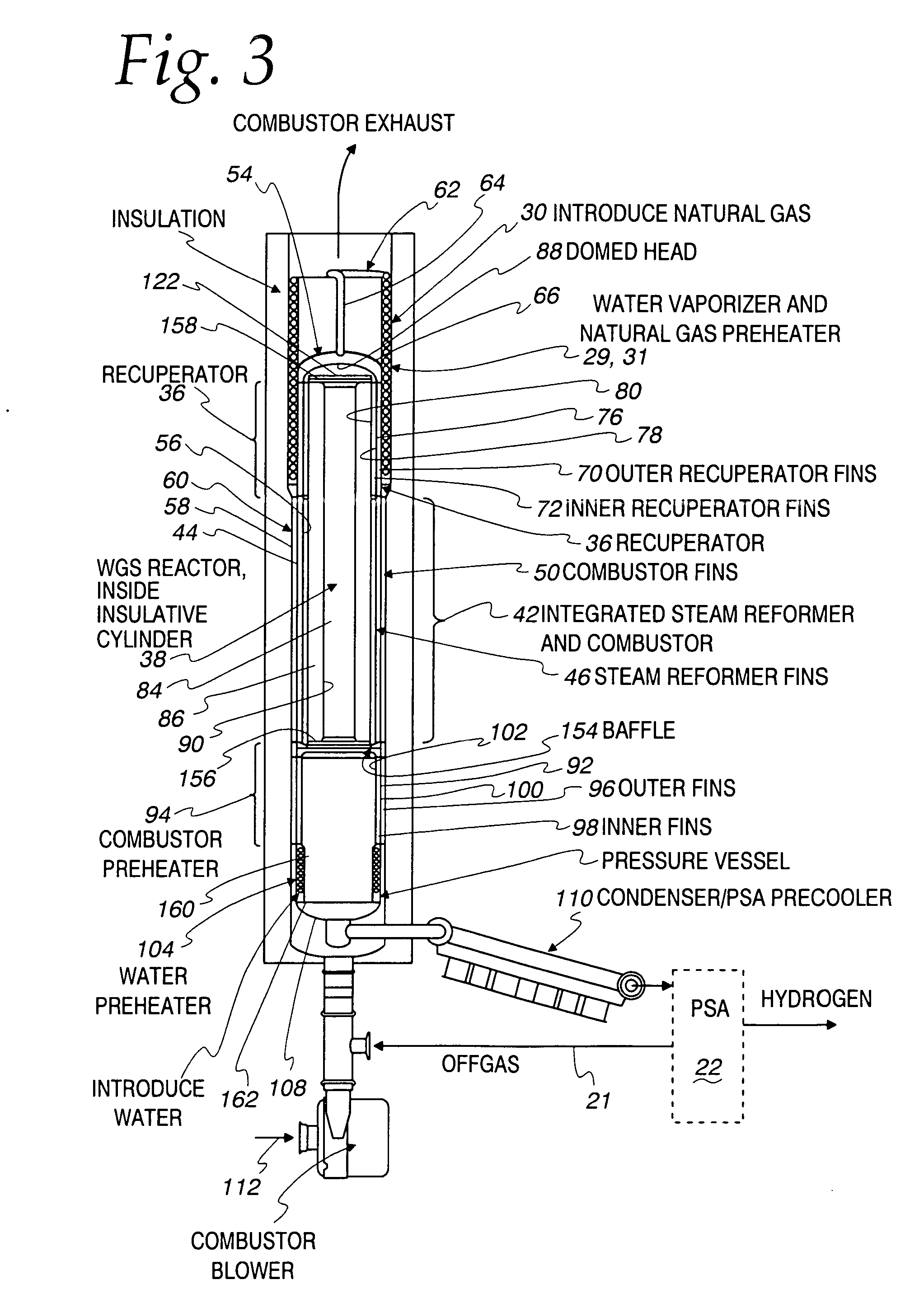Highly integrated fuel processor for distributed hydrogen production
a fuel processor and distributed hydrogen technology, applied in the direction of combustible gas production, dissolving, energy input, etc., can solve the problems of difficult transportation in the amount that would be required for a transportation fuel cell infrastructure, high hydrogen product efficiency, and high production volume of hydrogen in the united states. high efficiency, high metal temperature
- Summary
- Abstract
- Description
- Claims
- Application Information
AI Technical Summary
Benefits of technology
Problems solved by technology
Method used
Image
Examples
Embodiment Construction
[0044] A system schematic of a highly integrated fuel processor 20 is shown in FIG. 1. In this system, the only source of fuel required for the combustor is the hydrogen-depleted off-gas 21 from the Pressure Swing Absorption (PSA) unit 22. The high-pressure side of the PSA 22 is preferably designed to operate at 100 psig, while the low-pressure side of the PSA is designed to operate at near-atmospheric pressure (˜1 psig). Heat recovered from a combustor exhaust 24 of combustor 25 is used in a vaporizer 29 to vaporize and superheat a water feed 26 for a steam reformer 28, as well as to preheat a natural gas feed 30 for the steam reformer 28 in a fuel preheater 31. Heat is recovered from a reformate stream 32 exiting the steam reformer 28 and is used to further preheat the now mixed steam-natural gas feed 34 in a recuperative heat exchanger 36. A water-gas shift (WGS) reactor 38 is used to increase hydrogen production. Downstream of the water-gas shift reactor 38, additional heat is r...
PUM
| Property | Measurement | Unit |
|---|---|---|
| energy | aaaaa | aaaaa |
| energy | aaaaa | aaaaa |
| temperatures | aaaaa | aaaaa |
Abstract
Description
Claims
Application Information
 Login to View More
Login to View More - R&D
- Intellectual Property
- Life Sciences
- Materials
- Tech Scout
- Unparalleled Data Quality
- Higher Quality Content
- 60% Fewer Hallucinations
Browse by: Latest US Patents, China's latest patents, Technical Efficacy Thesaurus, Application Domain, Technology Topic, Popular Technical Reports.
© 2025 PatSnap. All rights reserved.Legal|Privacy policy|Modern Slavery Act Transparency Statement|Sitemap|About US| Contact US: help@patsnap.com



